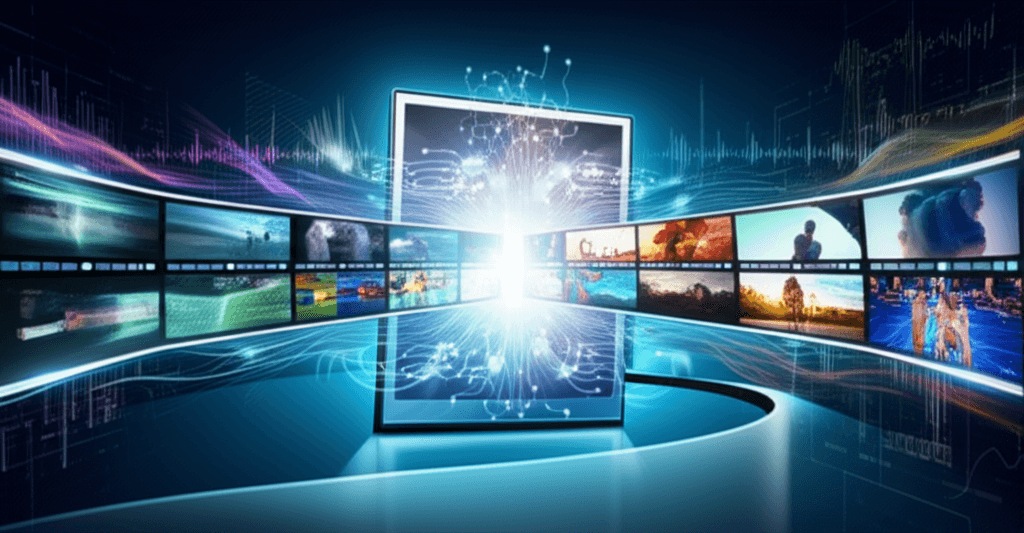Google offers advanced Veo 3 AI video with free monthly access.
Access Google's Veo 3 free monthly, choosing speed or cinematic quality, to democratize AI filmmaking and reshape creativity.
August 28, 2025

In a significant move to broaden the adoption of its advanced generative video technology, Google is now offering users a monthly taste of its powerful Veo 3 model through the AI filmmaking tool, Flow. Users are being given a choice each month to create either five videos using the speed-optimized "Fast" model or one higher-fidelity video with the "Standard" or "Quality" model.[1] This initiative represents a strategic effort by the tech giant to place its state-of-the-art creative tools into the hands of a wider audience, from casual creators to professional filmmakers, intensifying the escalating competition in the AI-generated media landscape. The offer is structured around a credit system, where new users to Flow are provided with 100 monthly credits, precisely enough to generate one "Quality" video or five "Fast" videos.[2][3]
The core of this offering lies in the distinction between Veo 3's two primary generation modes, a choice between speed and ultimate quality. The "Veo 3 Fast" model is engineered for rapid iteration and efficiency, allowing creators to quickly prototype ideas, generate content for social media, or produce multiple clips in a short amount of time.[4] This mode is significantly less resource-intensive, costing about 20 credits per video generation.[3] In contrast, the "Veo 3 Quality" model, which costs 100 credits per clip, prioritizes cinematic polish, delivering richer detail, more nuanced lighting, and the highest level of realism the platform can achieve.[3] This tiered approach allows Google to cater to different stages of the creative process—from initial brainstorming, where speed is paramount, to final production, where visual fidelity is the main goal. This strategy of putting advanced tools in the hands of many is aimed at fostering widespread adoption before potentially upselling users to more feature-rich subscription tiers.[5]
Google's Veo 3 model stands as a direct competitor to other prominent text-to-video platforms like OpenAI's Sora, boasting a sophisticated understanding of natural language prompts and the ability to generate high-definition video up to 1080p.[6][7] A key differentiator for Veo 3 is its native audio generation capability, allowing it to create synchronized soundscapes that include dialogue, sound effects, and ambient noise directly from the text prompt.[8][7] This integration streamlines the production workflow significantly, a notable advantage over models that require audio to be sourced and edited separately.[9] The entire experience is unified within Flow, an interface designed as an AI filmmaking suite that combines Veo's video generation with the capabilities of the Imagen image model and the language understanding of Gemini, enabling a more cohesive storytelling and scene-building process.[10][11]
The decision to provide a free monthly allowance for Veo 3 video creation is a calculated move in Google's broader AI strategy. By lowering the barrier to entry, the company can rapidly grow its user base, gathering invaluable feedback and data to further refine its models. This freemium-style approach, common in the software industry, serves as a powerful marketing tool, allowing the capabilities of Veo 3 to speak for themselves and entice users to subscribe to plans like Google AI Pro or Google AI Ultra for higher generation limits.[6][3] The Pro plan, for instance, offers 1,000 monthly credits, enough for approximately 50 Fast videos, while the Ultra plan provides a massive 25,000 credits.[12][3] This strategy not only aims to capture a significant share of the burgeoning AI creator market but also positions Google's ecosystem as an indispensable tool for the next generation of digital content production.
For the creative industry, Google's move signals a further democratization of high-quality video production. Independent filmmakers, small marketing teams, and individual content creators can now access tools that were once the exclusive domain of large studios with substantial budgets. This accessibility has the potential to unlock a new wave of creativity, enabling the rapid visualization of storyboards, the creation of unique social media content, and even the production of entire short films.[13] As the technology continues to mature and become more integrated into daily workflows, the distinction between professionally shot footage and AI-generated content is expected to blur, fundamentally altering the economics and creative possibilities of visual storytelling for years to come.
Sources
[2]
[3]
[4]
[5]
[6]
[7]
[9]
[10]
[11]
[12]